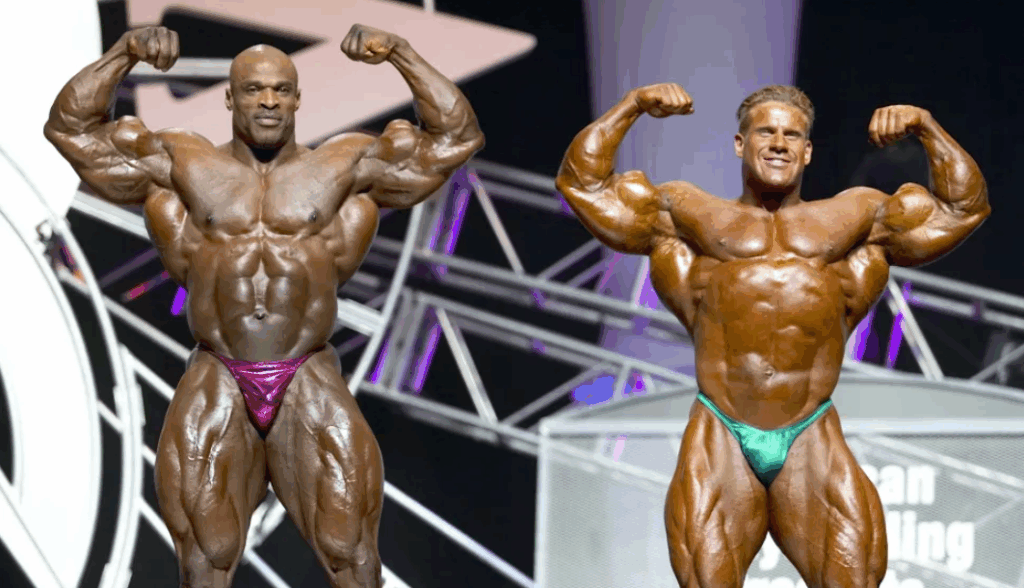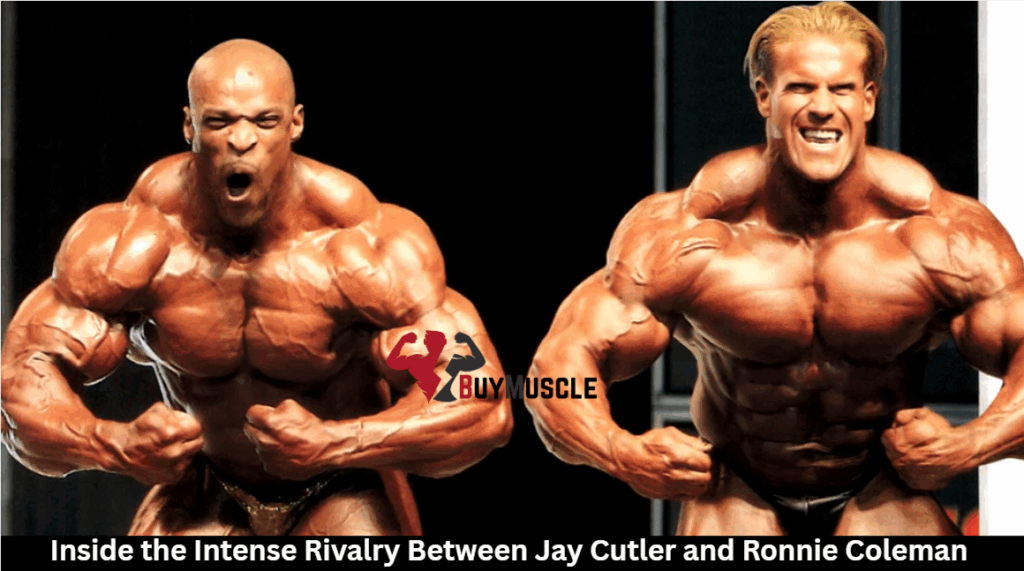The fight between Jay Cutler and Ronnie Coleman is the most famous in bodybuilding history. Coleman won Mr. Olympia eight years in a row from 1998 to 2005 with his huge “mass monster” body.
Cutler, on the other hand, chased him with precise aesthetics and strategic improvements. Cutler finally beat Coleman in 2006 after years of being in second place. He did this through careful planning and improved conditioning.
Their different styles and competitive nature changed bodybuilding standards, judging criteria, and athlete development for good. Their famous fights still have an effect on the sport today.
Contrasting Paths to Olympia Dominance
Jay Cutler and Ronnie Coleman would eventually become the biggest rivals in the sport, but they both started their bodybuilding journeys in very different ways. Coleman, a former police officer with amazing genetics, came out of nowhere with raw power and an unprecedented amount of mass. Cutler, on the other hand, built his career step by step through strict discipline and careful planning.
There were big differences between Coleman and Cutler during their competition years. Coleman was huge and had strange proportions, while Cutler had perfect conditioning and symmetrical looks. What makes their bodybuilding rivalry so interesting is how their different styles came together to make a perfect storm on the Olympia stage.
Their fights in the early 2000s made a legacy that went beyond individual accomplishments. They changed the standards of professional bodybuilding forever and motivated many athletes to go beyond what they thought they could do.

Coleman’s Unprecedented Dynasty
Ronnie Coleman’s reign over the Mr. Olympia stage from 1998 to 2005 was nothing short of legendary. His eight-year reign changed bodybuilding forever, setting a standard of athletic dominance that few competitors could match. At this time, you would see Coleman easily win championship titles. His huge body had a surprising amount of muscle symmetry along with its size.
Coleman’s amazing conditioning was what really set him apart from his competitors. When he stepped on stage, his skin looked like paper, and the muscle striations on his body amazed judges and the audience.
Ronnie’s combination of size, detail, and presence was too much for even Jay Cutler to handle. Many people think that Coleman’s famous battle cry, “Yeah, buddy!” is a sign of the golden age of bodybuilding.

How Cutler Dethroned The King
Jay Cutler finally did what many thought was impossible at the 2006 Mr. Olympia. He ended Ronnie Coleman’s historic eight-year winning streak. This was after years of finishing second. Cutler didn’t win by chance; he did it because he changed his competitive mindset and improved his training philosophy.
That year, you could see the difference in his body: his muscles were denser, his conditioning was sharper, and his proportions were better. Cutler later said that he had completely changed how he prepared, focusing on the weaknesses that Coleman had used before.
Cutler’s unwavering drive was what really made this upset stand out. Even though he lost many times, he studied Coleman closely, changed his strategy, and attacked with more determination than ever before. Not only did the title change hands in the bodybuilding world, but it was also the end of years of strategic persistence against odds that seemed impossible to overcome.

Mass Monster vs. Aesthetic Precision
Cutler’s win in 2006 brought to light a major difference that had been growing throughout their rivalry. There were two very different ways they went about getting the best body. Coleman was a “mass monster” in the history of bodybuilding, bringing a level of size and density to the Mr. Olympia stage that had never been seen before. His huge muscles often made judges and audiences gasp at what seemed impossible for a person to do.
Cutler, on the other hand, stood for aesthetic accuracy, focusing on balanced proportions, sharp conditioning, and careful detail. His stage presence showed that he had a more planned way of building muscle.
Even though they had different ideas about how to do things, both champions were dedicated to mutual respect. You can see the difference best in physique comparison photos from 2003 to 2006, where Coleman’s raw mass meets Cutler’s refined symmetry.
How Their Rivalry Transformed Bodybuilding
Many sports rivalries fade over time, but the Coleman-Cutler era changed bodybuilding’s competitive scene and cultural impact forever. Their competitions brought the IFBB to the attention of people all over the world, getting more media coverage than ever before and reaching new audiences.
When modern competitors talk about championship mentality, you’ll notice that they still talk about their battles. Cutler’s comeback win in 2006 is a great example of never giving up, and it set a new standard for determination in professional bodybuilding.
Their competition also changed the standards for bodies, paving the way for the mass-with-conditioning approach we use today. You can see the direct evolution of what Coleman and Cutler started when you watch current Olympia competitions. Their work has had an impact on judging standards and athlete preparation strategies even twenty years later.
Frequently Asked Questions
Did Cutler and Coleman Ever Train Together?
They maintained separate training regimens throughout their careers, which reflected their contrasting bodybuilding philosophies and competitive relationship.
How Did Their Rivalry Affect Their Personal Lives?
Their rivalry drove their personal lives through increased training intensity and dedication, but it also fostered mutual respect that evolved into friendship once their competitive careers ended.
Did Either Competitor Suffer Significant Injuries During Their Rivalry?
Both suffered injuries, but Coleman’s were more severe. You’ll find his spine and hips required multiple surgeries, while Cutler maintained better longevity. Their extreme training methods eventually took a physical toll on both men.








